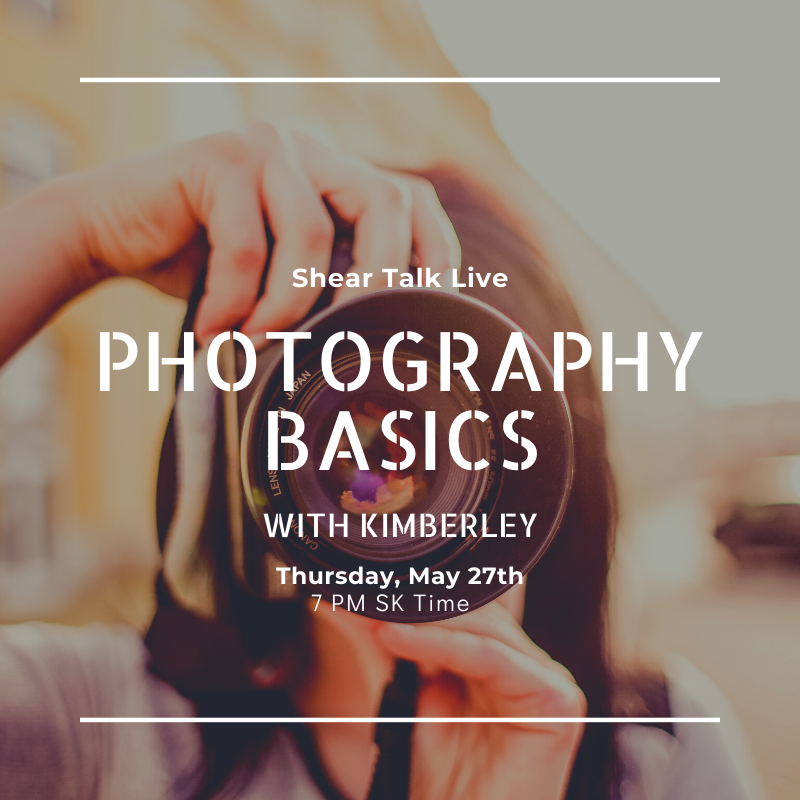Photography Basics

Whether you are using a point and shoot, DSLR, mirrorless or your phone, we are going to chat about some basic photography tips that can help you improve your photography.
Lighting
Lighting is arguably the most important part of good photography. Natural outdoor lighting is best! Overcast or cloudy skies actually give the perfect lighting. Direct sunlight can be trickier because it creates all sorts of shadows and the harsh lighting makes people squint and scrunch their faces. It also often leads to “over-exposed” photos that are too bright and wash out your subject/product. In the following example, you can see how the snow is over-exposed, making the wool coat appear darker and blurry, and the shadows from the trees cause distractions in photo. As a result, the wool coat isn't the highlight of the picture as it should be. Reflective backgrounds like snow and water can be especially difficult to work with in sunny conditions. If you are taking pictures under these circumstances, try to make sure there are not any buildings, objects or trees creating shadows or find a shaded spot.

An amazing time to take pictures is during the “Golden hour” - which refers to the hour or so just after sunrise or just before sunset. The warm and soft lighting from the sun during these times can create the most beautiful pictures.

You can play around with backlighting at this time too! Rather than the typical set up of having the light shining onto your subject with your (the photographer’s) back to the sunlight - do the opposite! Place the rising or setting sun behind your subject. There’s some trial and error with backlighting because you don’t want your subject to be too dark, so play around with the angle from which you are shooting!

When shooting indoors, do it in your brightest rooms when the sun is shining in. Position your model or make so that it is in the light. Try shooting close to a window, and moving distracting objects out of view. If you only knew the amount of toys moved out of the frame to take this picture. You can also see the natural light shining lightly on the models face on the left hand side, where there is a window.

Focus
First off, if you haven't already, learn how to set the focus on whatever camera you are using, all cameras will have this feature (including my old crappy android phone!). It's usually as simply as tapping the screen on the location you want to focus and a square or circle will appear on that spot. If you are taking modelled shots, 99% of the time you want the models eyes to be in focus. So set the focus to the models face. When the models face is out of focus, especially the eyes, the picture looks "off".

The other 1% are those “sneak peak” style photos where you might focus on another object and have the make blurred in the background or when you are focusing close up on a specific detail.

Steady hands are also really important, so if you are using a camera (vs. a phone), there is an actual proper way to hold it! That is with your arms close to your body so that it helps stabilize the camera. Any movement during the exposure time until that shutter clicks, will blur the photo. So try using a tripod if you have shaky hands. There are the typical 3 foot tripods, but also monopods that can be useful if you are moving to lots of different locations.
Angles and Composition
I’ve heard it said, it is best to get down to the eye level of whoever you are taking the picture. I think this is mostly true, and I shoot most of my pictures with that in mind. However, it is also nice to change up the angle from which you are shooting. Remember, you are also modifying the background when you change up the angle though. If you shoot from a higher angle, you are now including more of the ground as the background instead of the ground + skyline. Sometimes, this works, other times the picture looks more composed when you see the horizon line. In the case of these 2 photos, you can see in the one where I got down to her level, having the sky included in the picture, helps breakup the greenery and produces an overall nicer looking picture.


There is a theory with photography called the “rule of thirds”. Basically, if you divide your picture into thirds, you want to keep your model in the right or left third instead of directly in the centre. Following the rule of thirds, generally leads to well composed photos and helps you balance your subject with the negative space (i.e everything else) in the picture.


You can also use your surroundings to draw the eye's attention to the subject, like the lines of the tables on this picture in the greenhouse. See how they help guide your eyes to the subject. There are lots of natural things outdoors that have this effect as well, like a pathway, a row of trees or the sky horizon line.

Background
Ideally, you want a clear and uncluttered background. You don’t want a busy background taking the focus away from the make. If you are indoors, try moving things out of the way and make sure there aren't any toys, laundry and or random items on the floor.

If you are outdoors, choose a location where distraction will not be in the picture. Pay close attention to these as you take the pictures, because the worst thing is loading the pictures onto your computer and finding out that half the shots have a twig sticking out behind that makes it look like you’ve grown antlers. Also, choose a background where the make will ‘pop’ and not just blend in. I find the water background on the first picture, blends in a little more than I would have liked with the model. If I had shot the picture to include more of the shoreline or surrounding "greenery" like in the second picture, it would have stood out more. Same location, but 2 different views.


Bokeh
Bokeh is the fancy photography word for blurry. That beautiful blurry background you see that allows the make to pop? Bokeh! Bokeh has a lot to do with the distance between you and your subject, and you and the background/foreground. The closer you are to the subject, and the further the subject is from the background, the greater the bokeh effect. In this photo with that beautiful blurred background, I am rather close to my subject, but he's much further from the field and forest that make up the background.

If using a DSLR or Mirrorless camera, this is where a prime lens (non-zoom lens, ex: 50mm) and the aperture priority (AP) setting are really helpful. There are also plenty of editing programs that can help you achieve this. The blurred background really helps the subject stand out and has the added benefit of eliminating any unwanted background items. You can also play around with items in the foreground (part of the image closest to camera), like part of the bedpost in this picture.

Lastly, take lots of pictures and have fun with it! I usually take a minimum of about 100 different photos for a strike. These, of course, are in different poses, backgrounds, some are close-ups and others further away. Then, I narrow it down to 5 or 6 good ones by eliminating odd facial expressions, blurred features, awkward poses/angles and those that don’t highlight the fabric or pattern well. If you are taking pictures of kids/toddlers, I find shooting a million pictures while they do a “picturesque” activity works best. Go for a walk along a pretty path, pick wild flowers, throw stones into the lake, jump off rocks, look for bugs, find shapes in the clouds, make a sand castle or play eye-spy! If all else fails, a funny potty joke and some candy can always bring on a smile.
Editing
Some of the most popular apps for photo editing are:
- Photoroom (this one is highly rated for removing backgrounds - great for flatlays!)
- Snapseed
- Focos (great to create “bokeh”)
- Retouch (removes objects/blemishes)
- Lightroom (free on your phone)
- Adobe Photoshop (monthly fee, though Photoshop Fix is a free phone app)
- PhotoscapeX (this is what I use on my desktop to edit all my pictures)
Most are free, but some also have paid “pro” versions that give you extra features. Unless photo editing is a skill you’d like to learn though, I find the free versions give you plenty of options for levelling up your photos. Some of the features I often adjust on my pictures with the program I use (photoscapeX) are adjusting the brightest, lightening the shadows and sharpening the image by increasing the clarity. I like warm toned pictures, so if I find the image too cool, I’ll adjust the temperature. A pet peeve of mine is a tilted line of the ground, or countertop/table or any prominent background item that should be horizontal and it is NOT. So I will use the “straighten” image feature and sometimes crop in. If there is one particular spot you want to adjust, most editing programs have a “mask” feature, where you can select an area you want to edit on the image without affecting the entire image. For instance, you might use it if you’ve brightened an image as much as you can without making it over exposed, but your model’s face is still too dark. You can play around with other features like vibrancy, saturation, exposure and white balance to see what type of photo edits you like.
Additionally, the use of presets have become very popular as a quick and easy way to enhance your photos! Presets are filters that can be applied to your photo to create uniformity. There are many places to buy presets, just make sure they are compatible with the editing program you are using.
You can check out the live video HERE!
Happy Sewing & Photographing,
Kimberley Waddell

